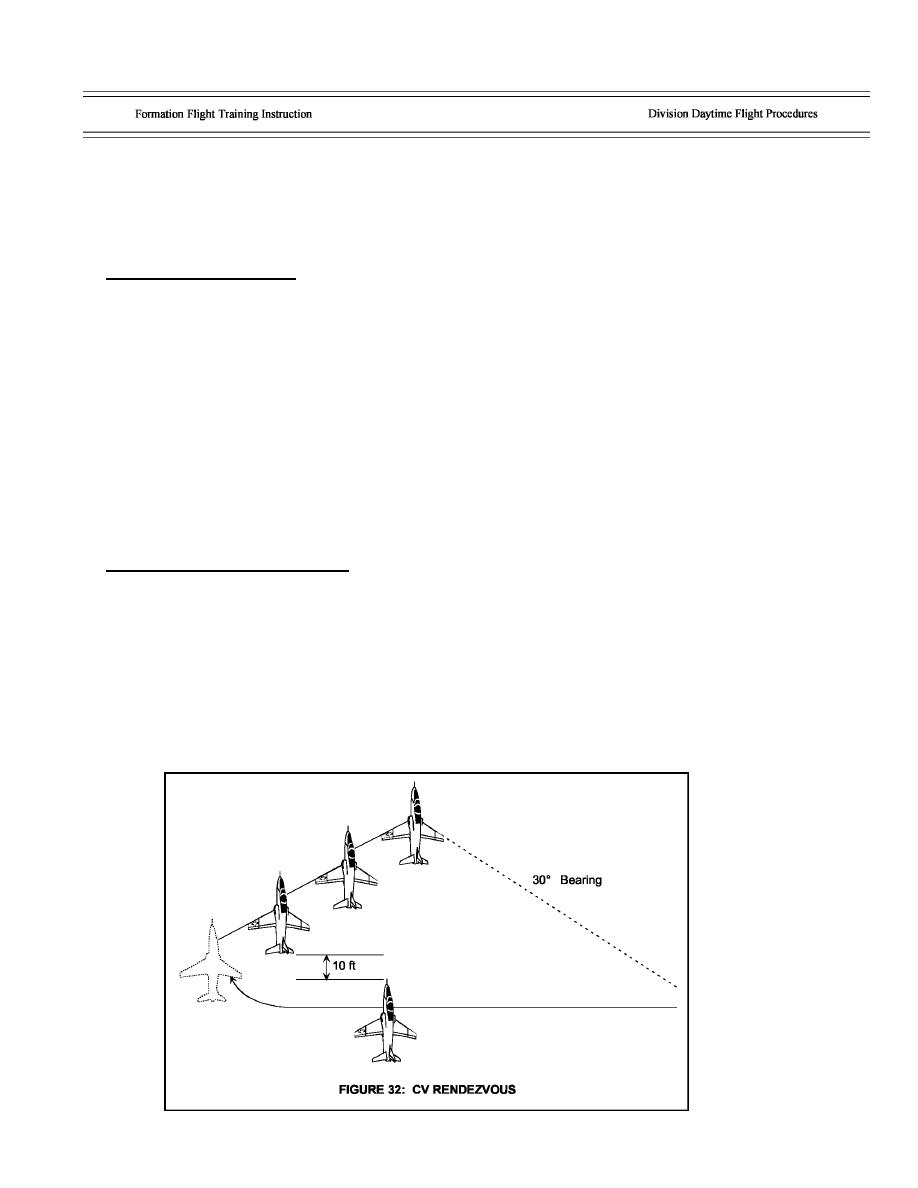
DRAFT
If you need to abort with flight members behind you, call "[call sign], aborting," and remain on your side
of the runway until either all other aircraft are airborne and pass you, or you are cleared to centerline by
the remaining aircraft. If you are aborting as the last aircraft in the flight, call "[call sign], aborting" and
ease the aircraft to the centerline in preparation for taking the long field arresting gear.
Division Takeoff by Section
The division takeoff by section is used in IMC or marginal VMC. Two separate section takeoffs occur
with only one section on the runway at a time. Section takeoff spacing is controlled by the release time
ATC passes to the tower.
The lead advises the tower that flight of four is requesting minimum separation between sections.
After the first section receives takeoff clearance and begins their section takeoff, the tower will clear the
second section to position and hold. When cleared for takeoff, the second section also performs a
section takeoff. Both sections fly to the briefed TACAN rendezvous point. If aborting, use the section
formation abort procedures.
INITIAL RENDEZVOUS/DEPARTURE/CLIMBOUT
The division rendezvous join-up, after an interval takeoff, joins all four aircraft expeditiously while
keeping the aircraft ahead in sight at all times. Procedurally, the rendezvous mirrors the section
rendezvous. However, complexity increases with four aircraft.
CV Rendezvous. Level or Climbing
Refer to Figure 32. A CV rendezvous is basically the same as the section CV rendezvous. All
aircraft must keep the lead on the horizon. If Dash-2 or Dash-3 fail to keep the lead on the
horizon, rendezvousing becomes more difficult for the following aircraft forcing them to go low to keep
everyone in sight. Stagnation on the bearing line by Dash-3 and Dash-4 may often be required to keep
the preceding aircraft in sight. If the wingman ahead of you is slow to get aboard, stagnate on and
maintain the bearing line until you can proceed with your join-up. Dash-3 and Dash-4 also need a little
more power than Dash-2 after crossing the lead's radius of turn on the join-up. After join-up, the lead
balances the formation by crossing Dash-2 under and Dash-3 and Dash-4 move up into balanced
parade (fingertip) position. (Refer to Figure 34, to get an idea of that formation.)
DRAFT
Page 41


 Previous Page
Previous Page
